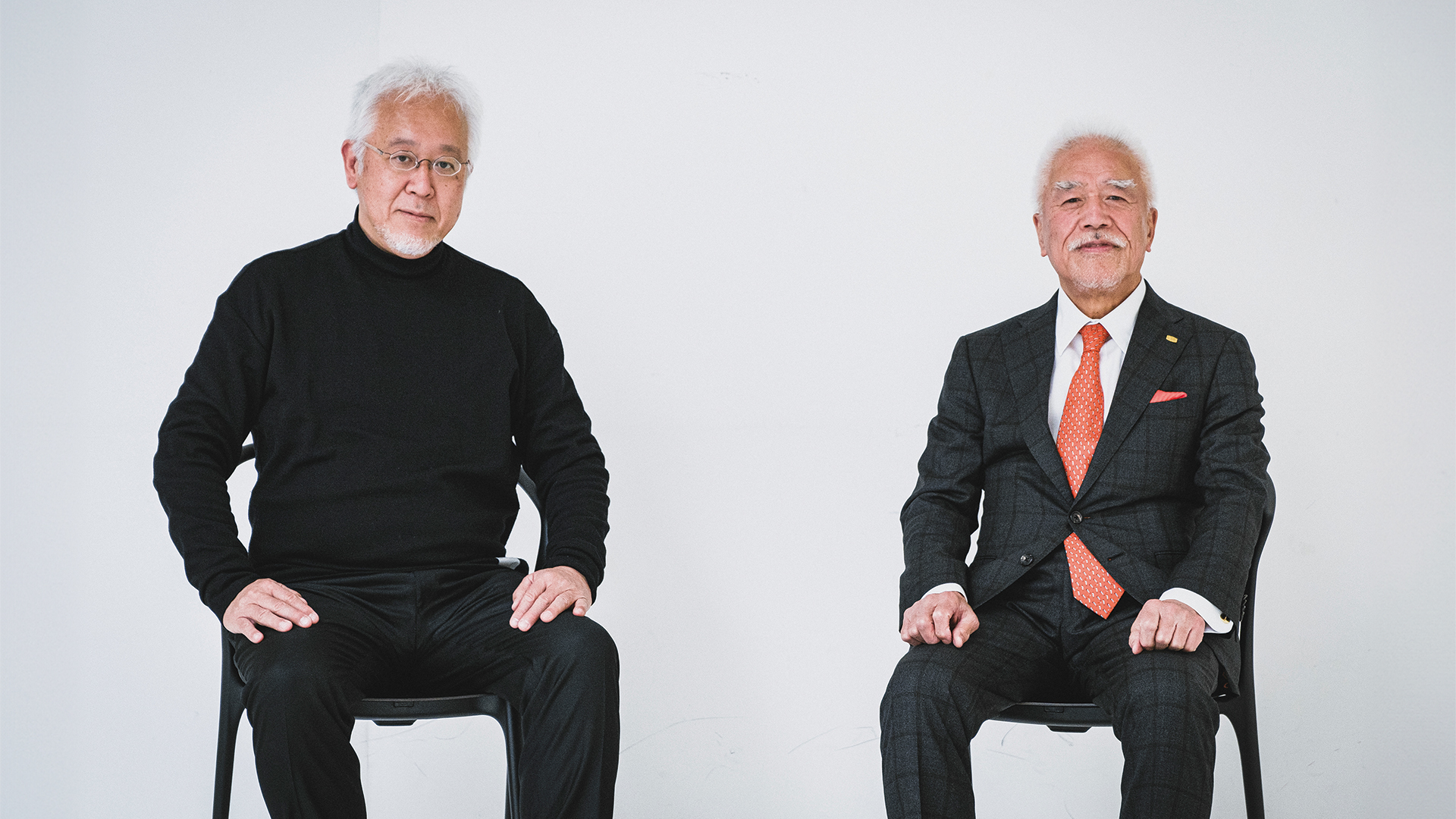
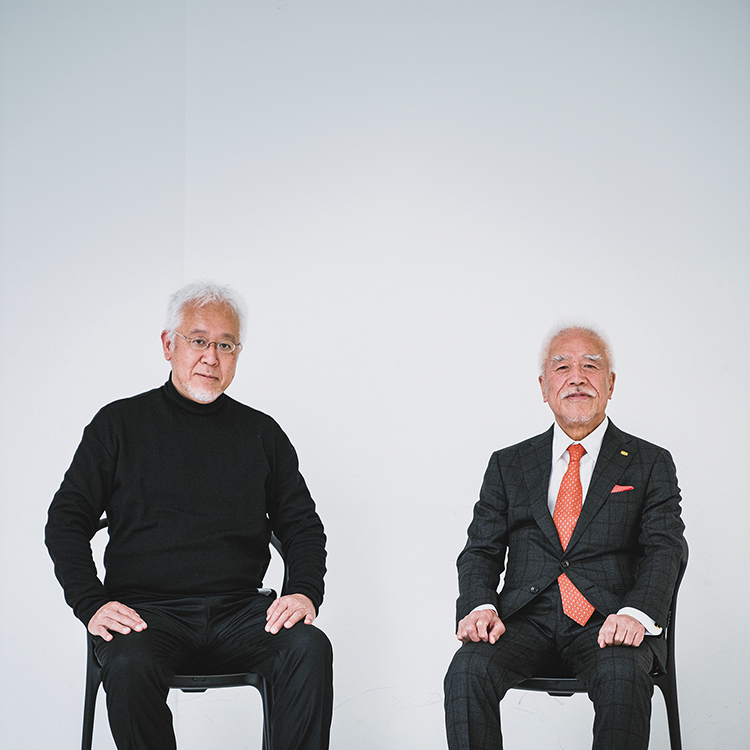


Junzo Tateno
CEO of UNION Corporation
Born in 1947, Junzo Tateno graduated from the Faculty of Law at Konan University (Kobe, Japan) in 1970
and entered Aoki Construction that same year. He joined UNION in 1973 and became CEO and President in 1990.
He serves as Chairman of the Union Foundation for Ergodesign Culture, a Public Interest Incorporated Foundation,
and the Osaka Industrial Bureau. He is also Vice Chairman of the Osaka Chamber of Commerce and Industry.
Kenya Hara
Born in 1958, Kenya Hara is a graphic designer and the president of Nippon Design Center, Inc. He is professor at Musashino Art University and vice president of the Japan Graphic Design Association. Kenya Hara organizes educational activities and exhibitions that aim to update and renew our existing values for objects, such as his exhibition Re-Design: The Daily Products of the 21st Century. He implements designs that are deeply rooted in Japanese culture and was in charge of designing the opening and closing ceremony programs of the Nagano Winter Olympic Games. In 2002, he began serving as the art director of MUJI and, over the years, has worked on various visual designs, advertisements, and visual identity projects for numerous corporations and commercial facilities, including GINZA SIX, Mori Building, Tsutaya, and Matsuya Ginza. Some of his many domestic and international awards include the Tokyo ADC Award, Mainichi Design Award, Yusaku Kamekura Design Award, Memorial Prize of Hiromu Hara, and Grand Prize at the Biennale of International Industrial. In July of 2019, Kenya Hara launched the website HIGH RESOLUTION TOUR (teikuhiko), which covers a wide range of activities, such as trying out new approaches to the tourism industry and introducing Japan through a high resolution lens based on his individual perspective.
15
TATENO
You’ve had a spectacular career as a graphic designer. How long have you been active as a designer?
HARA
I’ve been working as a designer close to 40 years ever since I graduated from graduate school and joined the Nippon Design Center in 1983.
TATENO
You’ve taken on a lot of new challenges in a wide range of fields. What kind of design were you engaged in when you first entered the Nippon Design Center?
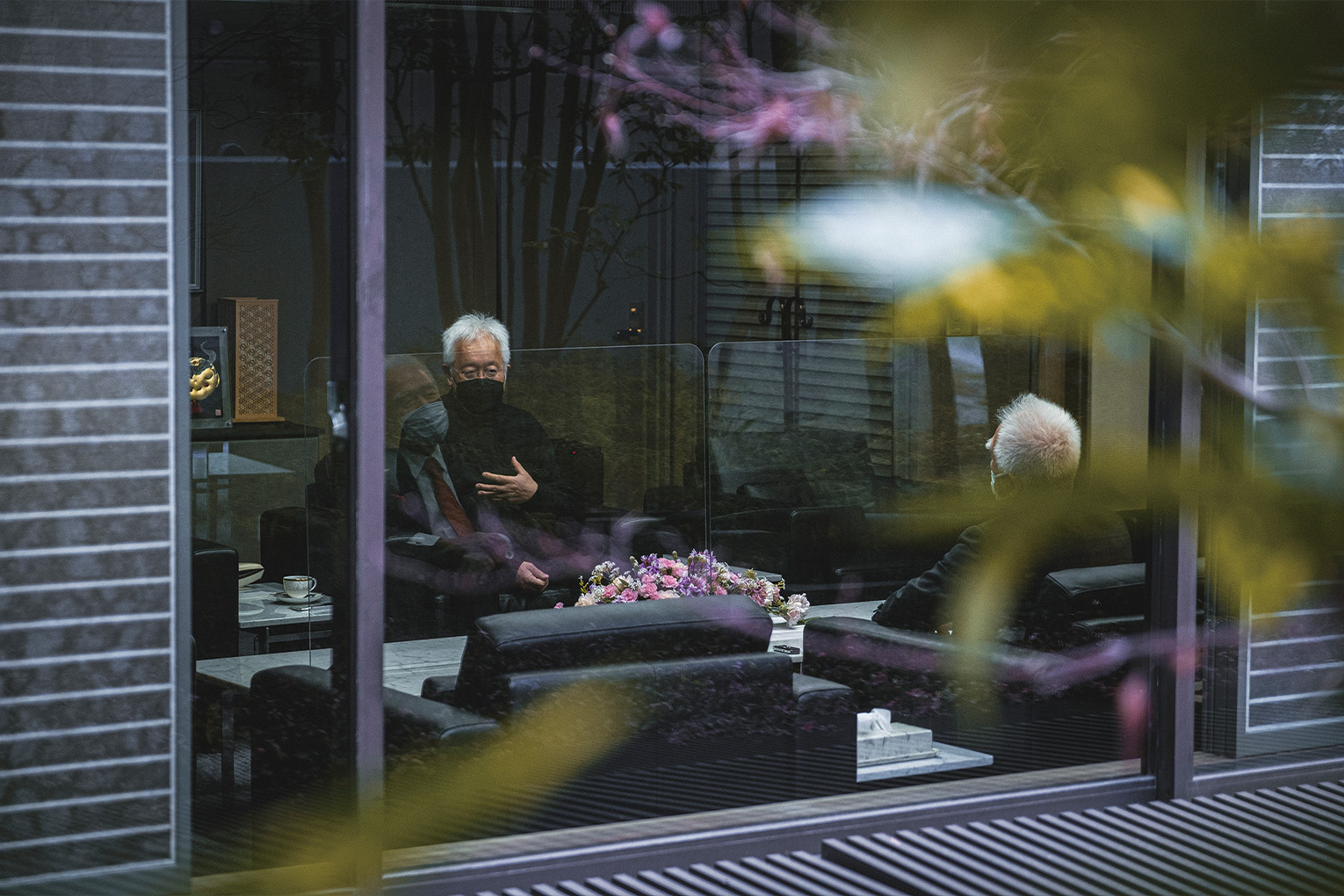
HARA
I mainly worked on advertisements, what’s known as “old media” now. Posters, catalogs, newspaper ads, etc. I got my start as a graphic designer when media was still clearly separated into newspaper ads, magazine ads, TV commercials and the like. In addition to advertisements, I eventually started working on package designs. Now, the meaning of design for me has begun to slightly change, though.
TATENO
What do you mean exactly?
HARA
I started my career doing the types of work just mentioned, but gradually my interests expanded to include spatial design like exhibitions. There’s a company called Takeo that deals in paper. They’re not a paper manufacturer but a trading company that trades in both white paper for printing as well as high value-added fine papers that focus on texture and color. Their work consists of ordering paper used for packaging, as well as books on color and texture, from paper manufacturers, keeping a stock of this paper, making sample books, and selling these. I first met Takeo when I was around 30 years old.
TATENO
What got you started planning the TAKEO PAPER SHOW?
HARA
Skilled paper masters must cultivate graphic designers if they hope for paper to further develop and get distributed. Just as a door handle maker like UNION grows by working directly with architects, so too do paper manufacturers and trading companies need to find a good way to educate graphic designers. Based on this belief, I began directing the TAKEO PAPER SHOW in my early 30s.
TATENO
I see.
HARA
There were exhibitions for paper sample books before this, but I wanted to incorporate the talents of a wider range of creators in order to discover a completely new world of paper. Rather than simply making posters, we focused on expanding the world of paper itself, while exploring the possibilities of paper as a product or, put another way, as an object in sheet form. In doing this, my interests eventually started to move towards spaces.
TATENO
At UNION, we were the first in our industry to make and print a catalog in color. For the catalog’s paper, we wanted to use something special and reached out to a paper manufacturer. They made a paper just for us, and we were able to create a really great catalog in the end.
HARA
Is that right? Speaking of paper, there’s more to paper than whether or not it can be printed on. In the past, people thought calendars were made from quality paper simply if the texture was glossy. After some time, however, glossy paper fell out of fashion, and paper with a bit of grain and texture became more dominant. Paper also used to be pale in color, but now pure white is preferred. During the bubble era, a truly great number of paper types started to come out every year.
TATENO
With so many types of paper in circulation, graphic designers must have spent a lot of energy on selecting the right paper.
HARA
They did. Paper sounds simple but you have to consider all the differences in thickness, color, and of course texture. We made a set of all the paper types, categorized them, and edited everything clearly according to the type and application. We then put all these papers at the desk side of the designer in the form of a sample book. We called these sample books “mini samples,” and when affixed to the side of the desk where the designer was working, they allowed for designers to quickly access information on the paper. Designers would cut the paper, attach it to the sample book, and then make an order with a printing company. Eventually, it got to the point where, instead of the printing company ordering the paper, the designers were ordering the paper themselves.
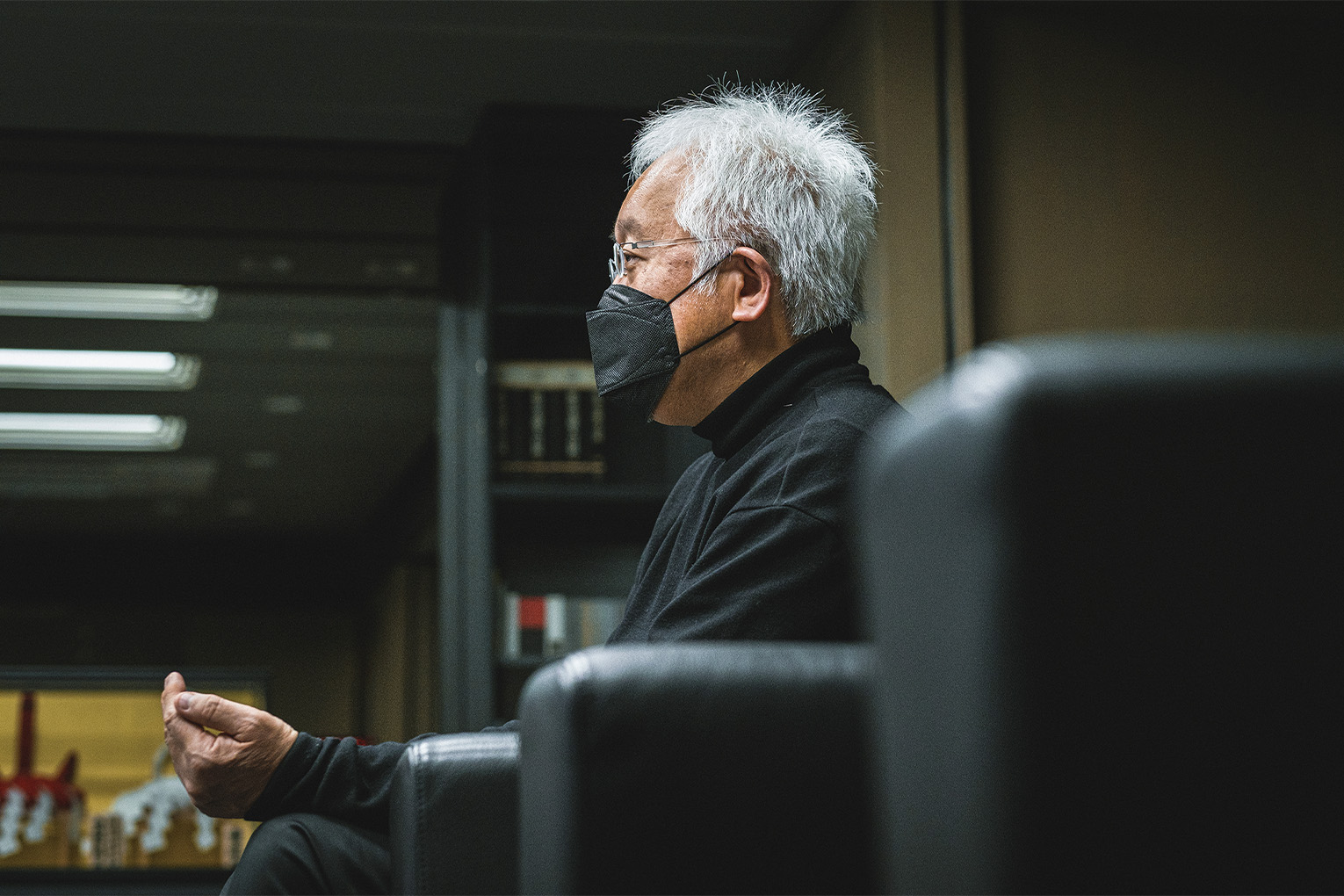
TATENO
We also show samples of our products’ material and finish to architectural firms, so they can make their own selection. This is similar to what you have described.
HARA
It is, and this system still hasn’t changed to this day. That said, the publishing industry has become increasingly focused on cost, so fine paper is no longer used in abundance as it once was. We are, however, entering an age where technology is transforming paper.
TATENO
What do you mean by technology changing the nature of paper?
HARA
Laser cutting technology has improved to the point where it is no longer necessary to prepare a mold for the paper. In terms of printing technology as well, recent improvements have allowed for printing in high resolution on textured paper such as Japanese washi, whereas it was not possible to print with high precision on paper with a rough texture in the past.
TATENO
We can even print using raised characters now.
HARA
That’s right. There are many more things we can do today. In the world of packaging, we are finding ways to do things with paper that were not possible with conventional papers of the past. Technology is expanding the field of paper.
HARA
We started RE-DESIGN as part of the TAKEO PAPER SHOW in 2000. The theme of this exhibit was to fix or redo designs. At the time, I was more interested in design in general than in paper itself. People often think that design is this remarkable and surprising technology, when in fact everything we know has already been well thought out and designed. I realized that there isn’t anything around us that hasn’t been designed in some way.
TATENO
Interesting.
HARA
This is why, rather than making something that would surprise people or grab their attention, I wanted to provide insight into the seemingly surprising places where we can find design. From that point on, my outlook towards design dramatically changed.
TATENO
I see. So this was sort of a turning point for you.
HARA
It was. Around that time, I took over for the art director Ikko Tanaka in working at MUJI, and in 2002, I began handling MUJI’s art direction myself. The work was referred to at the time as “no design.”
TATENO
With a brand name like “MUJI” (unbranded), I thought that there was no design.
HARA
MUJI positions itself as a low cost brand without any design. It also has an ecological side to its business. That’s the type of brand they are, but it isn’t true that they have no design. In fact, the minimalism that is emblematic of the brand could be considered the ultimate form of design. The feelings that were awoken with the RE-DESIGN exhibition were, therefore, accelerated with my art direction at MUJI, and my sense of design took form. My design direction began to slightly diverge from other designers who were seeking to create surprising forms and shapes.
TATENO
I feel like MUJI’s products began to become more uniform after you took up your position there.
HARA
Of course, it wasn’t all my doing. Many other members, such as Naoto Fukasawa and Takashi Sugimoto, helped support MUJI. I became an advisor, and Naoto Fukasawa oversaw products. During our discussions I began to notice a dramatic change. We had to demonstrate the products’ quality, while making it look like they hadn’t been designed at all. We also had to make sure that products were made at a low cost, which was no easy task. The products looked simple, making them easy to copy. *Laughs.*
TATENO
You had some issues with trademark registration, didn’t you?
HARA
Yes, the MUJI trademark for one of the categories was acquired first by someone in China. China is really good at making cheap products without any design. For us at MUJI, we have to continue thinking about what we can do to continue to enjoy the trust of our customers.
TATENO
There are lots of similar low-cost products on the market that imitate the original. It’s also true that some people are completely satisfied with knockoffs. What needs to be done to ensure that people use the real thing?
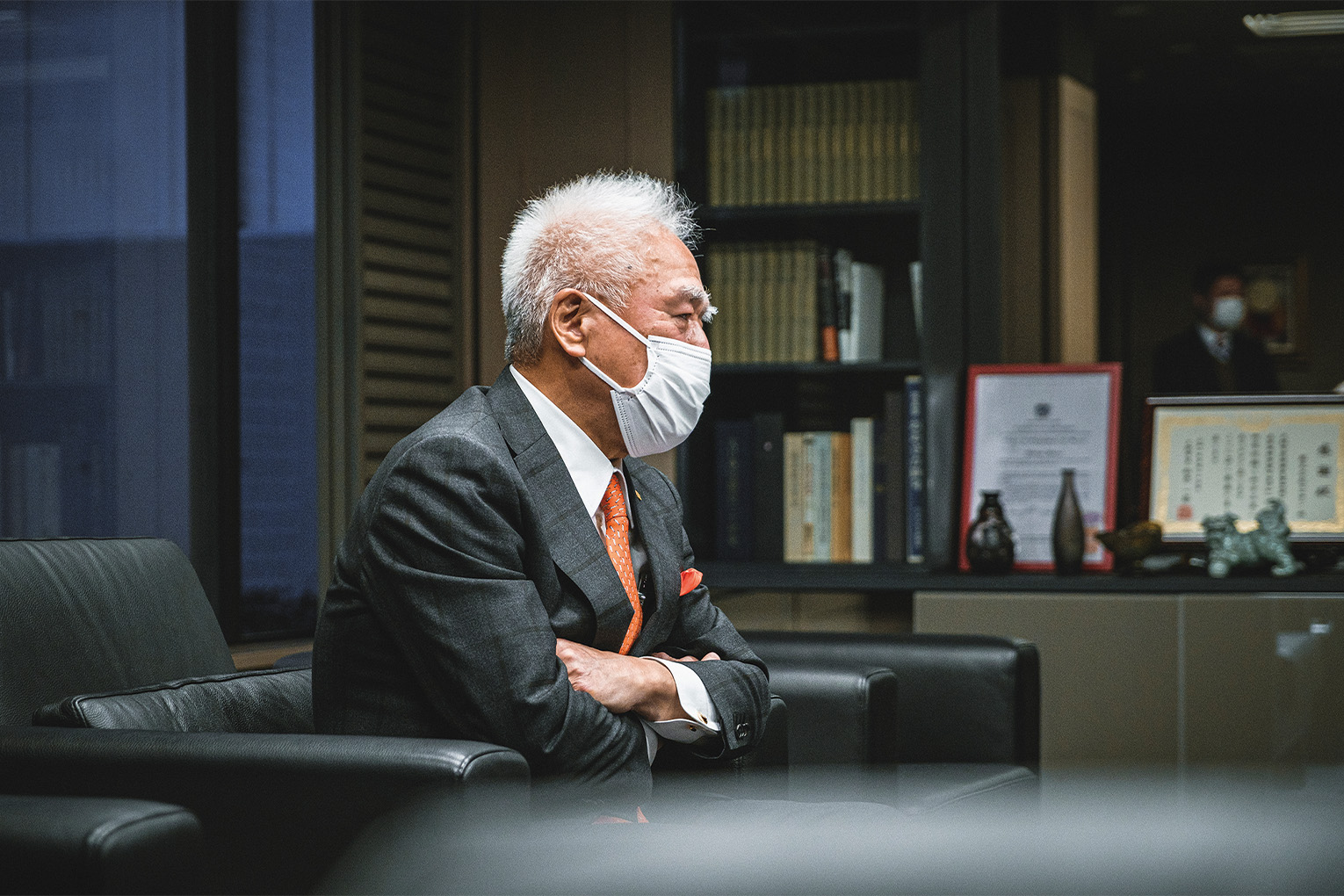
HARA
In the end, people are not impressed with the shape of things, but rather sympathize with the idea behind the brand or the background against which something was created. If people are satisfied with imitation products, that’s fine. There’s no need to acquire them as customers. That said, the background and ideas behind the product need to be expressed in some way. It’s important not just to simply make products, but to create some kind of point where the brand’s ideas and background can be seen even when making something in another field.
TATENO
You mean by using things like advertisements?
HARA
Even when putting out an advertisement, you don’t need to directly point out the product’s exceptional features. What’s important is to include some expression that gives the customer a sense of what your company thinks about the planet or the environment. Since MUJI is a brand that was originally created within a specific ecosystem, we don’t directly state that we are doing good things for the environment as such.
TATENO
How does MUJI talk about the environment in its messaging?
HARA
Last year we ran a cleaning campaign. We shot footage of people cleaning around the world and made a video with the slogan “Pleasant, somehow.” This is all based on the MUJI philosophy. We want to send out a message to the world asking “what does cleaning mean to us?” and acquire the customers who respond to this message. If customers see this but don’t sympathize with our philosophy at all, there’s nothing we can do to win them over. In a sense, each brand has its own niche in the world, and this niche can’t be too wide or too narrow. If you can find your own field and then start a discussion there, I think you’ll be able to secure fans for your brand.
TATENO
It’s important to take a good hard look at your brand and really think things through, isn’t it?
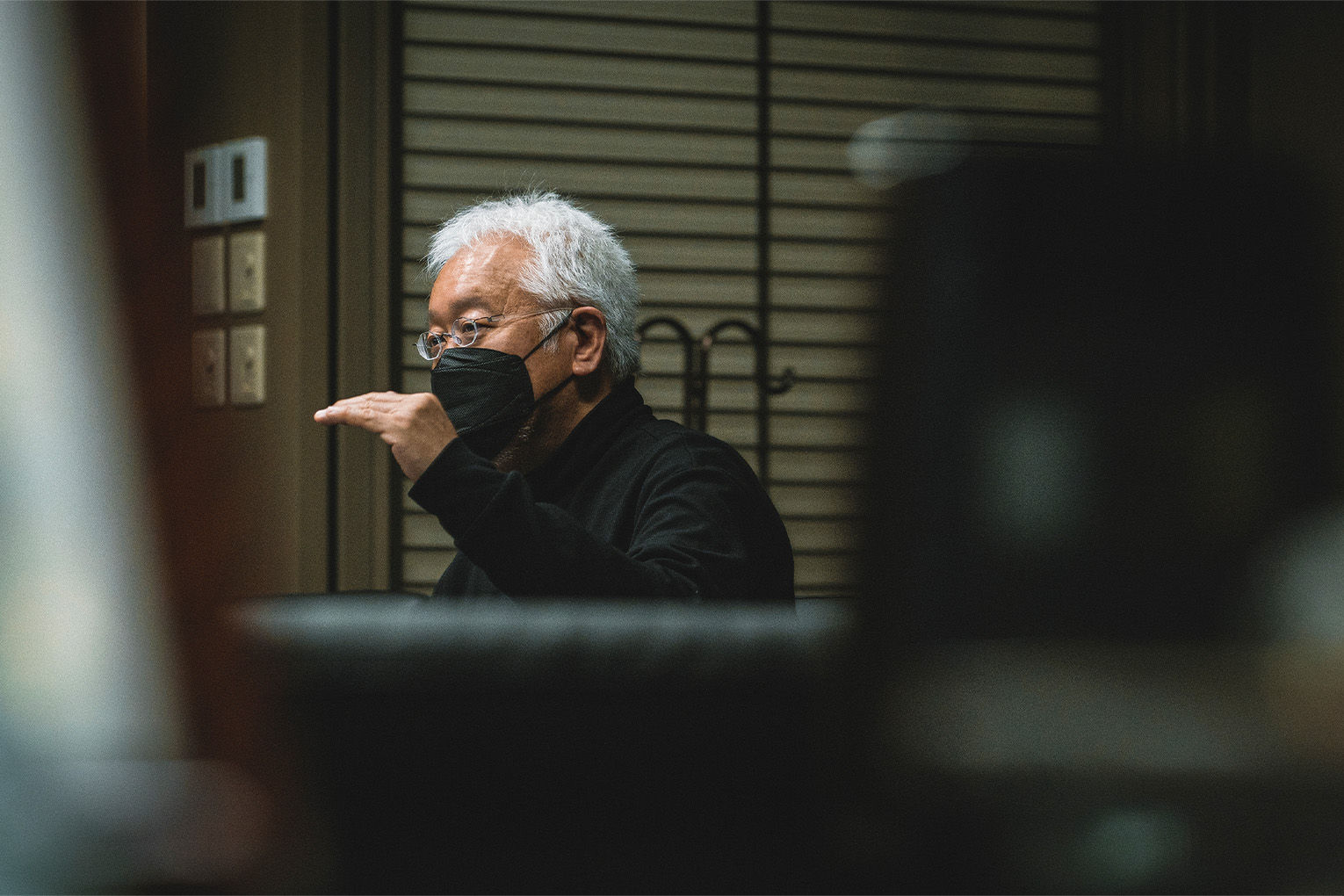
HARA
Yes. For example, we consider things like what if we built a MUJI hotel or house? Or what would happen if we started a travel agency? Or if we had a baseball team, what concept would we manage it under, and so on. We are always talking about these kinds of things at MUJI. Personally, I think running a travel agency would be interesting.
TATENO
MUJI is already constructing hotels, correct?
HARA
The first MUJI HOTEL was built in Shenzhen, China, followed by hotels in Beijing and Ginza. Please stay at MUJI HOTEL the next time you’re in Tokyo. It’s located on Ginza’s Namiki-dori street.
TATENO
That’s a great location.
HARA
The basement is home to a cafeteria called "MUJI Diner," and the ground floor to 6th floor are occupied by MUJI stores. The hotel lobby is on the 6th floor, and the guest rooms are located on floors 6 to 9.
TATENO
How many rooms does the hotel have?
HARA
It has 79 in total. Since it’s located right in the center of Ginza, there are lots of delicious shops and bars around. Mornings in Ginza are really nice as well. If you take a walk through Ginza at around 6 in the morning, you can witness the area come to life. Ginza in the morning is really a sight to see.
TATENO
Ginza in the morning, you say. You’ve got me intrigued. And what are the rooms like?
HARA
Japanese-style luxury is more about what you remove than how much you decorate, wouldn’t you say? Border lines from the floor to the ceiling are clearly demarcated, and we’ve been able to create a sense of luxury at an affordable price by creating a minimalist design that doesn’t look too bare or shabby.
TATENO
I really want to check this out.
TATENO
You’re also the man behind the HOUSE VISION project. Can you tell me how this project got its start?
HARA
I’ve always had a fondness for architecture. This also was due to working at MUJI. Did you know that MUJI carries 7,500 items?
TATENO
They have that many products!? That’s amazing.
HARA
If you designed the whole interior of your house with MUJI products, it might look a little too simple. People have certain preferences they want to incorporate like placing an impressive mahogany table in their home or buying chairs from a classic brand they like. What’s important is how you propose a specific type of lifestyle to the customer. It’s not about using MUJI products for everything. This got me thinking about what the shape of living looks like rather than the shape of the house or the architecture itself.
TATENO
Once again your interests have shifted.
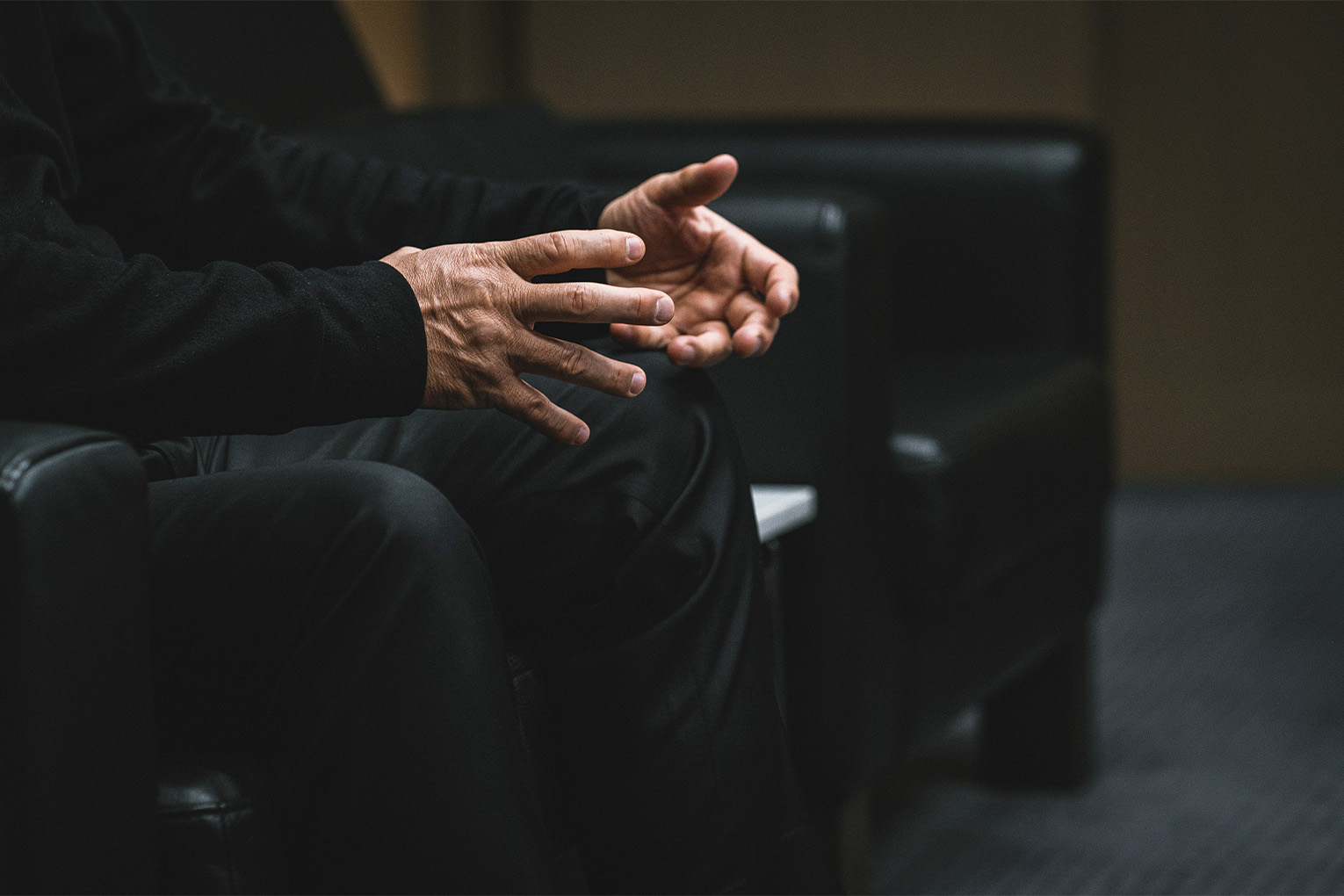
HARA
In carrying out my various designs, I began to think about what the future of Japanese industry will look like. A house is a sort of platform for industry. It’s an intersection where various industries come together. When a house is being put together amidst issues surrounding energy, telecommunications, community, and even aging societies, it doesn’t help anyone if the air-conditioning company only talks about air conditioning, the robotics company only thinks about robots, or the energy supplier only talks about the future of energy. Everyone has to come together and think collectively on the same platform for the future to truly come into view.
TATENO
I see.
HARA
In this sense, I believe the house is the most obvious platform for thinking about the future. For architects, the house is perceived through an architectural lens, but I think it would be interesting to bring in a more diverse range of perspectives and think about the house together in terms of energy, telecommunications, and its collection of high-tech appliances.
TATENO
So you are thinking not only about the house, but also naturally looking at things from the perspective of life and lifestyles.
HARA
Of course, you have to think about lifestyle. There are few people with as diverse a range of lifestyles as the Japanese. The number of existing properties for sale has been increasing since the new earthquake-proof standard law came into effect in 1981, so people are now returning these properties to their skeletons and building their own homes. I feel we are entering a new era of homebuilding.
TATENO
We’ve entered an age where proposals for homes need to incorporate a range of different perspectives.
HARA
I’m sure you can sympathize with this, but isn’t it exciting when you go to see a housing exhibition?
TATENO
It sure is.
HARA
The reason it’s exciting is because you get to visit an actual full-size house. Model homes are also interesting to see, but housing exhibitions give you an idea of the actual size of the home as well as what it will look like when fully furnished and decorated. You can actually touch the home, and that’s exciting. That is why we launched HOUSE VISION, a project in which companies and architects pair up to realize houses that have never been seen in full-scale before. We try to build around 10 houses, which everyone can look at and think about.
TATENO
That’s an extremely interesting venture.
TATENO
In 2019, we put on an exhibition for Milan Design Week with Tsuyoshi Tane. We actually blew into molds and let visitors see the manufacturing process behind a lever handle. Around 50,000 people visited the exhibition. It was quite well received.
HARA
Is casting rare in Italy?
TATENO
They have casting in Italy, but you can’t go and see it actually taking place. Getting to see the actual manufacturing process is pretty special, which is why so many people enjoyed it.
HARA
50,000 people? That’s quite impressive.
TATENO
Thank you.
HARA
I get frustrated every time I attend the Milan Furniture Fair. The Milan Furniture Fair was originally an event intended to bolster the furniture industry in Milan, Italy. Numerous talented designers gather from around the world to provide their designs free of charge. That’s the system. Of course, they get a portion of proceeds if their design sells, but transportation and design fees themselves are not covered. Something bothers me about these talented designers bragging that they presented in Milan. We have to create an opportunity for designers to present their skills in Japan, not in Milan.
TATENO
I think it would be interesting if we held an event like the Milan Furniture Fair here in Osaka. Osaka is the birthplace of architectural hardware. I think it would be a more fruitful opportunity, however, if we had a wide and varied range of manufacturers gather from across the architectural industry, rather than just getting people from the hardware industry to come together. If we could pull off an event like that in Japan, I think it would surpass the Milan Furniture Fair in the end. By the way, your HOUSE VISION exhibition was also held overseas, wasn’t it?
HARA
HOUSE VISION was held two times in Japan, and the third time it was held in Beijing.
TATENO
Beijing, is that right?
HARA
Yes. This year is the fourth installment, and we will be holding it in South Korea. I have been thinking that it would be good to do it in Japan again as well. The architect Sou Fujimoto has told us it’s an interesting exhibition, and he has attended every time.
TATENO
Sou Fujimoto also attends, does he?
HARA
Yes. I’ve asked him to organize the venue.
TATENO
Kengo Kuma has also attended, if I am not mistaken.
HARA
That’s right. At the time, we borrowed cedar lumber from Sumitomo Forestry, and Mr. Kuma created a wooden frame by stacking the lumber together. He didn’t use any nails either. When the exhibition was over, we took it apart and put it back into square pieces so that it can be used again next time.
TATENO
That idea could be adopted as is at the World Expo in 2025. What a wonderful concept to not use nails in order to reuse the wood.
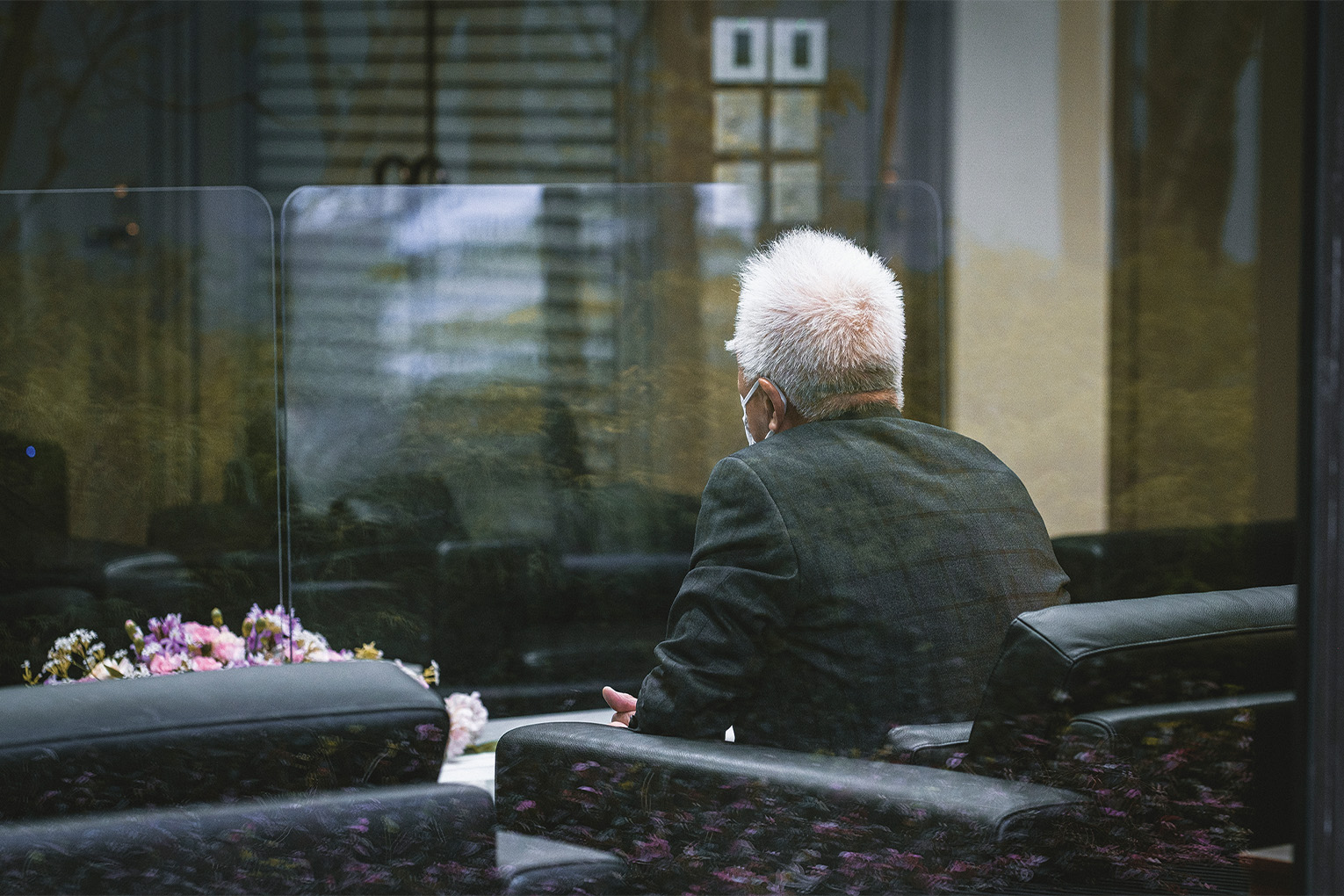
HARA
Mr. Kuma really made something wonderful for us. It’s one of the spaces I like most out of all our HOUSE VISION exhibitions.
TATENO
I was really surprised to learn that MUJI is working on hotels.
HARA
I myself began to take an interest in hotels due to this. When traveling around the world, I realized that you can tell a lot about the surrounding area if there is a hotel there. You’ll find great hotels in areas with nice views. Rather than obstructing the view or spoiling the scenery, the hotels reveal something unknown about the environment of the area by being there.
TATENO
This could provide the chance to discover the real value of Japan.
HARA
Exactly. Japan’s natural features are a resource for the future. The Japanese archipelago really has a lot of potential. France’s population is only about half of Japan’s, but before Corona, it received around 90 million foreign visitors per year. More people came to visit the country than actually lived there. Up until around 2009, Japan only received around 6 million foreign visitors annually. 10 years later, however, this number had increased to 32 million.
TATENO
This was around the time when the appeal of Japan really started to spread overseas.
HARA
In other words, there are many parts of Japan that the world has yet to discover, so I got a sense that by creating advanced facilities there we could open the way to a sort of high-resolution tourism. At a pace of about once a month, I’ve begun shooting and editing images of places I find wonderful, many of which I have visited in the past, and posting them online.
TATENO
I’ve looked at these.
HARA
Thank you. I’ve visited over 40 different sites and have found more and more places that highlight Japan’s potential, so I really hope a new age of tourism is upon us.
TATENO
Before Corona, Spain received around 80 million travelers per year as well. The majority of these visitors came to see the works of Gaudí.
HARA
That’s right.
TATENO
Architecture has the power to attract people. There are many Japanese architects with great potential, too. Although we are going through a difficult period right now with Corona, we must erect structures that have the power to attract people from all over the world in the future.
HARA
I agree. The talent of Japanese architects is world-class, and yet, many of Japan’s public buildings, such as its airports, are unremarkable. This is probably due to the fact that the most cost-effective options are the ones chosen at project competitions. We need to see private companies realizing the potential of the land and building on it accordingly. We must harvest the beauty of the land in architectural form as a resource for the future.
TATENO
We must leave behind a form of culture befitting the land itself. Mini-Tokyo's are popping up across the country, and only temporary buildings are really standing out. This isn’t good.
HARA
Now is the time when we should be building long-lasting structures that are good for the local community.
TATENO
We need to construct buildings that blend in with the scenery and natural features of the land.
HARA
I think we have a lot of architects in Japan that could expand this potential. I believe that not only large-scale projects like public buildings, but also small and wonderful architectural works will create new possibilities in the future. I get very excited when I think about this.
TATENO
Going back to an earlier discussion, you named your website, which introduces locations that you have found particularly special, HIGH RESOLUTION TOUR (teikuhiko). Why did you choose this title?
HARA
Some time ago, I took a flight in a small prop plane. We flew at an altitude of around 1000m, and you could really see the ground clearly. Prop planes are not capable of instrument flight, which basically prohibits them from flying through the clouds in what is known as “visual flight.” Pilots fly while keeping an eye on the flight route. Japan’s topography when seen from an altitude of 1000m is really complex and interesting. When you see the terrain in this way, you get a better idea of how the land in Japan is situated.
TATENO
I’m sure the content will get even better as you continue to create an archive of the beautiful places you visit.

HARA
That site serves as a type of basic research for me. If I don’t carefully observe Japan, I can’t produce the variety of products and projects I desire. I am not only engaged in art direction, but also in figuring out what kind of value I can find through my work. The world is switching to an industry of value creation rather than just product creation.
HARA
Compared to expensive French wine, Japanese sake is quite cheap, isn’t it?
TATENO
You really do get a lot for what you pay for.
HARA
During the long Edo period when Japan was still a society of the masses, sake was sold at a price that everyone could afford. That was a great society in its own right. That said, if we look at global tourism as an industry, it will be difficult for Japan to develop its own industry unless we can produce a 700ml bottle of alcohol that sells for ¥200,000 like France does. It’s worth thinking about where and how you would sell a ¥200,000 bottle of sake in Japan.
TATENO
Since you are a designer, one way of doing this could be to focus on the packaging.
HARA
That’s of course one idea. Another idea is to create a story. Sake is a beverage made in accordance with an area’s climate and natural features. It’s important to develop a story that tells what the sake is made from in that region. In doing this, you can create something that can only exist there.
TATENO
You can then express this as part of the package.
HARA
Exactly. You make a website and then sell it online. Or you can serve it at a hotel in the area where the sake brewery is. This way the sake would not only have an elaborate label, but also provide a glimpse of the story behind its making. Japanese sake would have a lot of potential, if we were able to create a dialogue around it like this.
TATENO
When you go to a local region there are tons of sake breweries, each with their own unique character.
HARA
Both shochu and Japanese sake are often made at small breweries and distilleries. I believe that’s part of what makes them interesting.
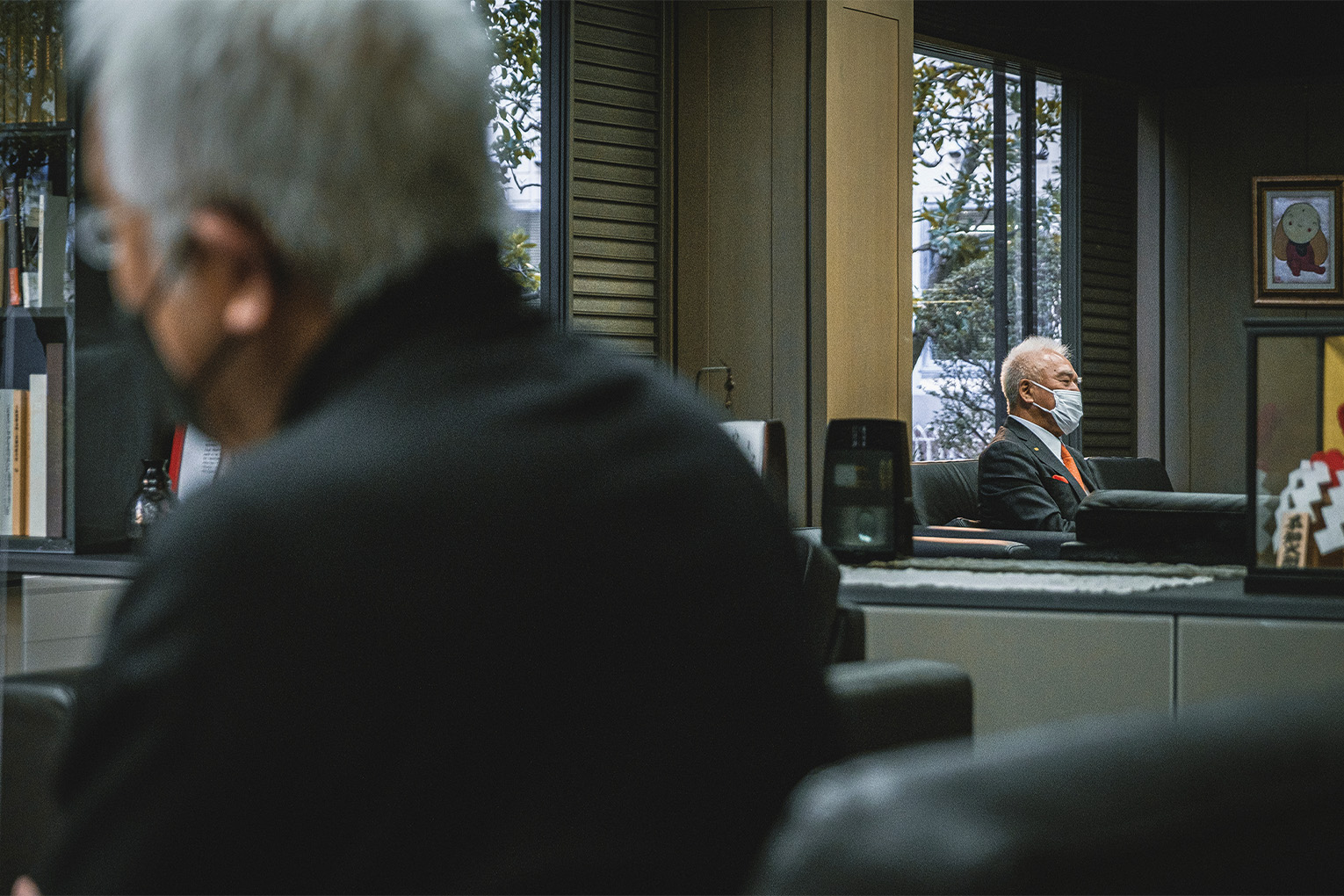
TATENO
If Japanese sake became more a part of the meals and hotels that are rooted in local communities, then there might be more opportunities for people to come to these places from overseas.
HARA
Yes. If we think of a hotel as something that integrates climate, culture, cuisine, the area’s natural features, and everything else, then I feel we will start to see more and more great things in each region of Japan. I’m originally from Okayama Prefecture, and I’ve been contacting various people around Setouchi, not only designers and architects, but also landowners, investors, and ferry and bus operators, to discuss how we can create new value together in the Setouchi zone. It’s really quite interesting.
TATENO
I see you’ve been taking on a variety of new challenges outside the field of graphic design.
HARA
In a way, HOUSE VISION and HIGH RESOLUTION TOUR (teikuhiko) are all connected. Graphic design is a type of communication. It’s a style of branding used to create identity. This is because it controls value. For me, advertising and thinking about how to incorporate an area’s value into a hotel are one in the same.
TATENO
I see. It must be really exciting to watch your work expand in such a way.
HARA
It is. I’ve been designing for around 40 years now, but in a sense, I feel like I’ve just reached the starting line. When I began working on HOUSE VISION, I remember feeling the same way. Whenever I take on a new challenge, I always end up falling into this same sensation. I think that, even though I’m a graphic designer, maybe there’s a way I can work with houses and spaces. I don’t have a lot of experience producing hotels, but I feel like I could do it if I got serious about it. I may just suddenly drop dead in the middle of doing all these things though. *Laughs.*
TATENO
*Laughs.*
HARA
Still now, the things I want to do keep popping up one after the other, so I get the feeling that my interests will only continue to expand.
TATENO
I’d like to ask you, then, if you think a person’s sensitivity gets refined through challenging themselves in various ways. I often see young people bemoaning their own lack of sensitivity and have been wondering what can be done about it.
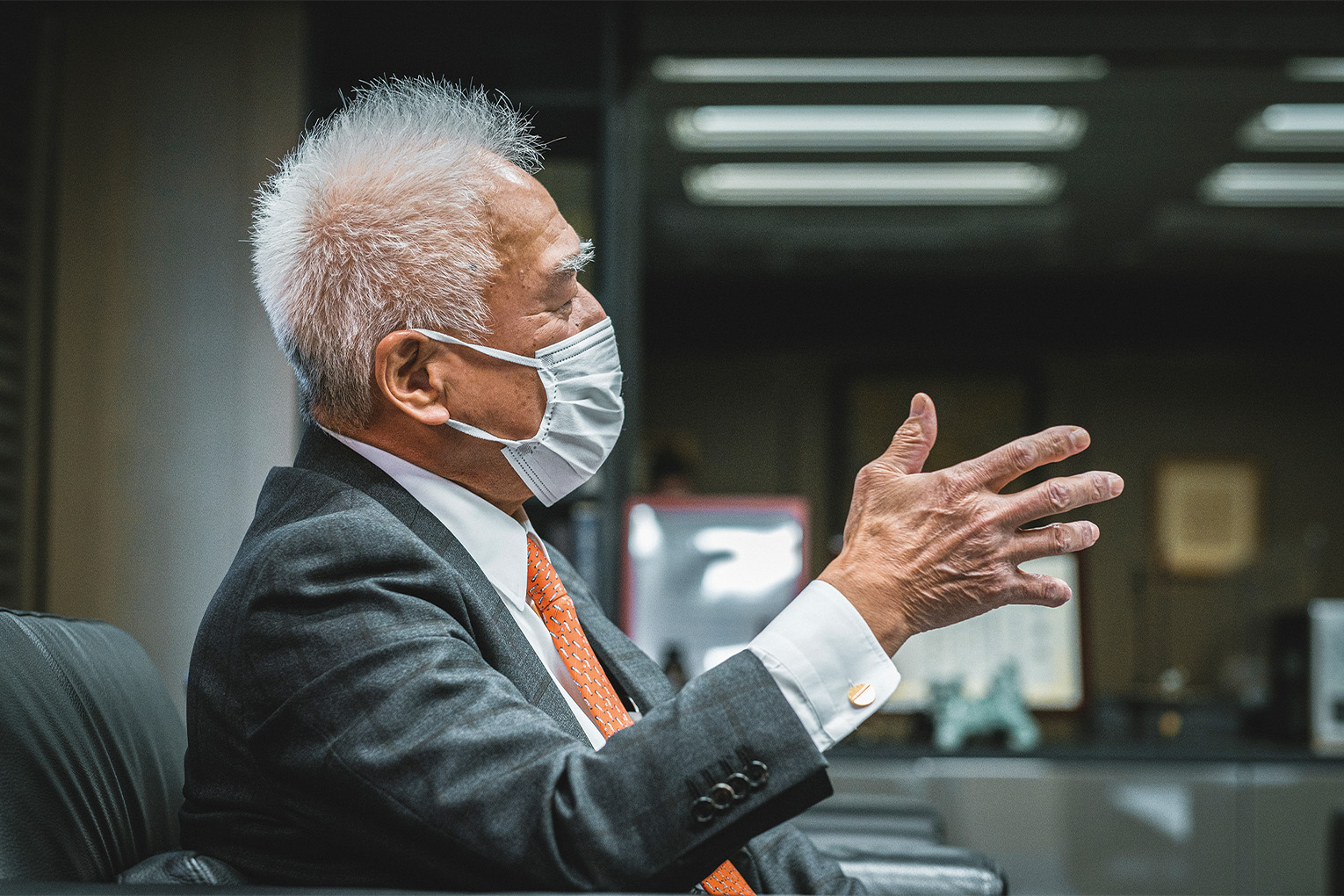
HARA
I believe that curiosity sharpens one’s sensitivity. That’s why I think it’s important to keep moving and look at all types of things. Continually thinking about different ways to do things, while maintaining this curiosity, can be said to be a form of design in and of itself.
TATENO
If you come up with an interesting idea, you’ll want to find a way to realize it and will take action accordingly. I feel that this process is important.
HARA
I agree. When you come up with an idea that you definitely want to bring to life, you feel as if you don’t want to die until you see it realized. This is not something that I started thinking at this age, but rather something I have been feeling since I was in my 30s.
TATENO
Look at and touch various things. And no matter what, keep challenging yourself. Make an effort to see things through to fruition. There really are various elements involved in refining one’s sensitivity.
TATENO
Though some are whispering that AI technology has finally developed to the point where it can replace humans, I believe that design, in its many forms, is still an area where AI will not be able to catch up.
HARA
I agree. That said, AI should be capable of producing things like layouts. Take, for example, a job designing a package for canned beer. If the can’s shape and the manufacturer's logo are decided in the beginning, and various other parts are prepared in advance according to the theme, then I think AI would be able to combine these to create a rough design. Moreover, AI should be able to instantly produce hundreds of different layouts, so it might be able to take over a human’s job in some cases. I think AI would make my life easier, though. *Laughs.*
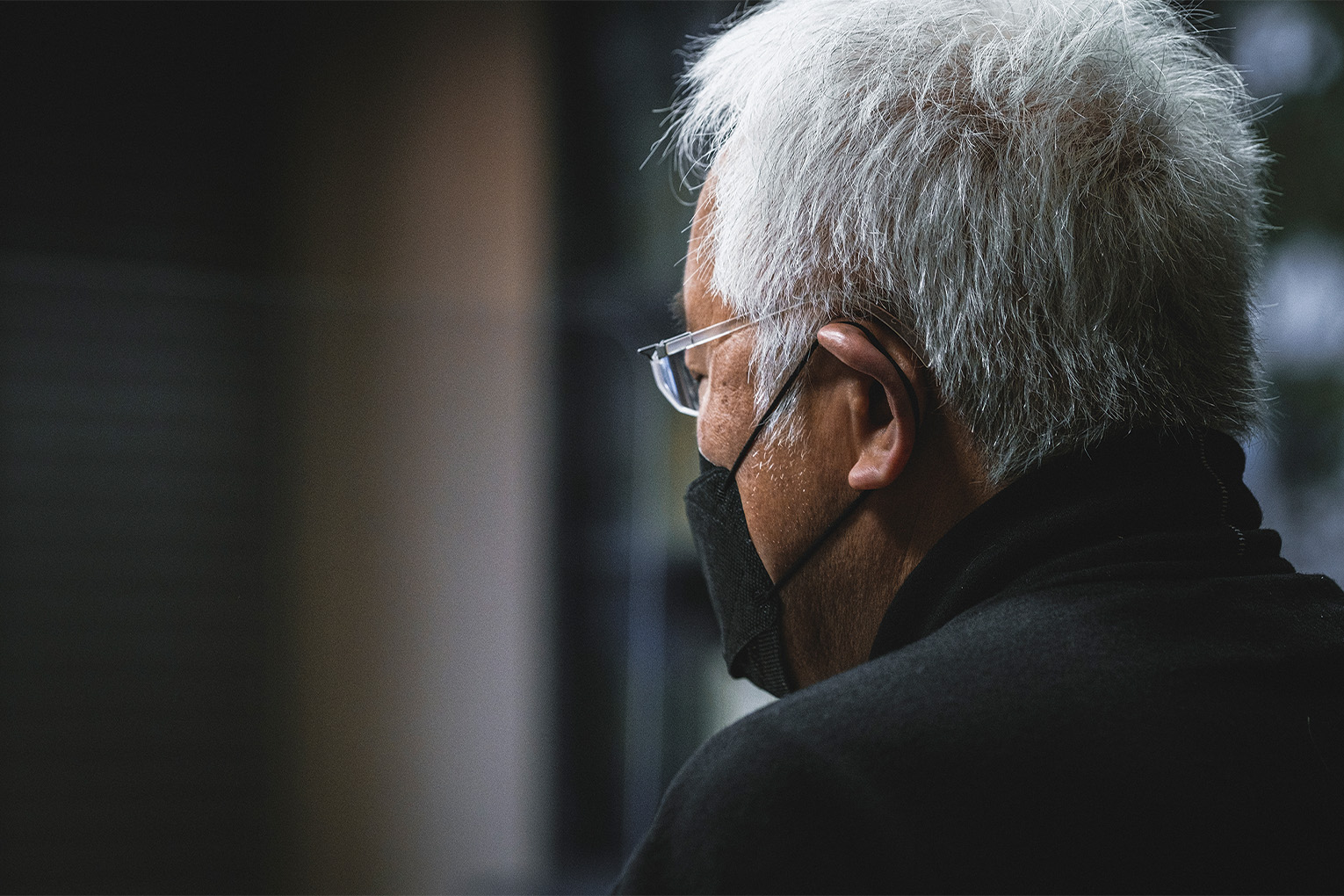
TATENO
*Laughs.*
HARA
But even if you have a lot of ideas, you must have the skill necessary to select the best one, which requires human ability. If you think of AI’s potential to do things on behalf of us as an extension of our own ability, then the things we are capable of doing naturally increases. This is why humans should become the lords of AI. If the technology advances too much, however, there may come a time when AI takes over the world like in a sci-fi movie. *Laughs.* Nevertheless, I think, for the time being, the role of AI is to serve as an extension of our human abilities.
TATENO
Personally, I would be a little sad if AI were to replace us in making creative works.
HARA
Put another way, there’s nothing we can really do if such creations were to disappear.
TATENO
You have a point. Ideas lacking creativity may very well be weeded out by AI. We should think about how to create new things, while using AI in the best way possible.
*Interview concludes*
Both
Thank you very much.
Planning: Naoyuki Miyamoto
Photography: Kesuke Kitaura
Writing: Fumiya Daito
Web Direction: Ryo Kijima